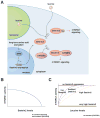The Dawn of the Age of Amino Acid Sensors for the mTORC1 Pathway
- PMID: 28768171
- PMCID: PMC5560103
- DOI: 10.1016/j.cmet.2017.07.001
The Dawn of the Age of Amino Acid Sensors for the mTORC1 Pathway
Abstract
The mechanistic target of rapamycin complex 1 (mTORC1) is a master regulator of cell growth that responds to a diverse set of environmental inputs, including amino acids. Over the past 10 years, a number of proteins have been identified that help transmit amino acid availability to mTORC1. However, amino acid sensors for this pathway have only recently been discovered. Here, we review these recent advances and highlight the variety of unexplored questions that emerge from the identification of these sensors.
Keywords: CASTOR; SLC38A9; Sestrin2; Sestrins; amino acid sensing; amino acid sensors; growth control; mTOR; mTORC1; nutrient sensing.
Copyright © 2017 Elsevier Inc. All rights reserved.
Figures




References
-
- Abraham RT, Wiederrecht GJ. Immunopharmacology of rapamycin. Annu Rev Immunol. 1996;14:483–510. - PubMed
Publication types
MeSH terms
Substances
Grants and funding
LinkOut - more resources
Full Text Sources
Other Literature Sources
Medical
Molecular Biology Databases
Miscellaneous

